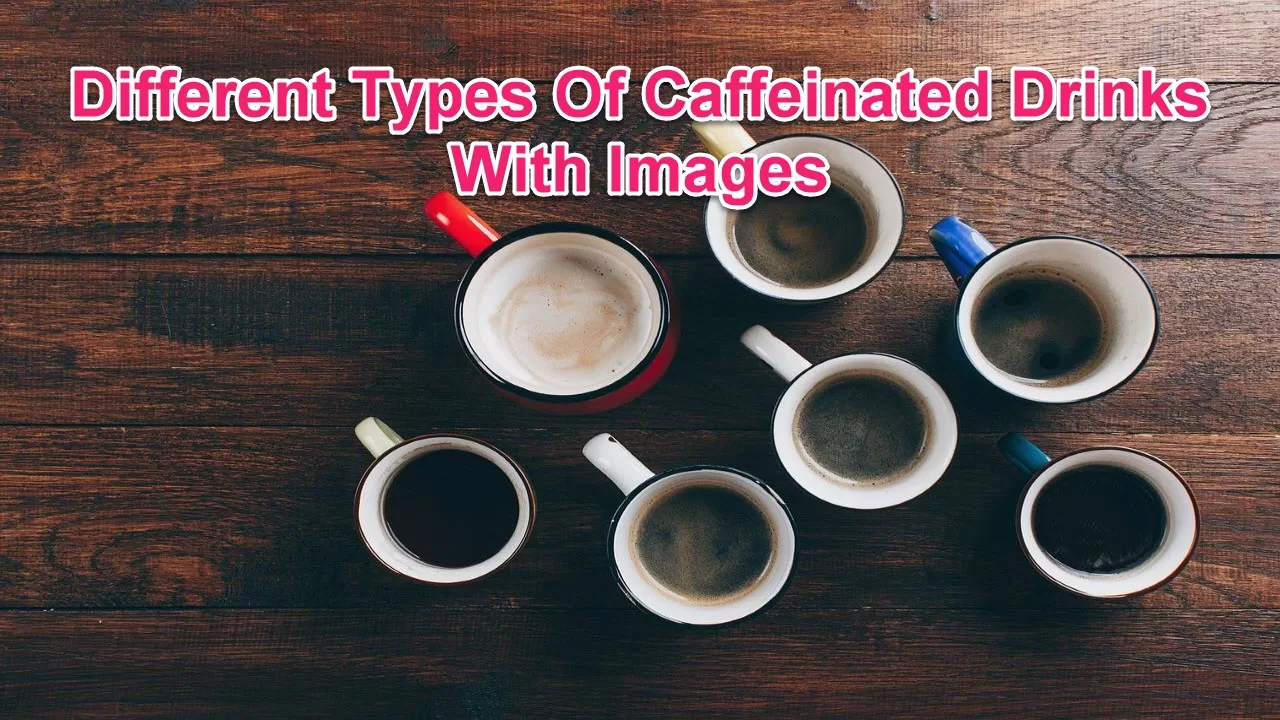For many people, coffee is a daily requirement that helps them wake up, get through the night shift, or boosts their energy.
One of the most widely utilized compounds in the world is this organic stimulant, caffeine.
If you enjoy coffee, you should read this article. Learn which beverages contain a lot of caffeine.
If you are interested in this topic, scroll down and continue reading.
Types Of Caffeinated Drinks
What Is Caffeine?
A natural stimulant of the central nervous system , caffeine, is used to improve cognitive function by raising alertness, boost energy and attentional ability.
Caffeine-containing drinks can help people stay awake and boost their cognitive function. These beverages’ caffeine content is obtained by steeping the plant material in water, a procedure known as infusion. Some people use caffeine-containing drinks to lessen or avoid tiredness and to enhance cognitive function.
Caffeine is classified by the US Food and Drug Administration as generally recognized as safe. Most individuals can take up to 400 mg amount of caffeine each day without experiencing any adverse health effects. Adults with a variety of health conditions, such as anxiety, sleeplessness or insomnia, and high blood pressure, may experience problems with too much caffeine quantities. Also, the European Food Safety Authority reported up to 400 mg of caffeine per day (around 5.7 mg/kg of body mass per day) does not raise safety concerns for non-pregnant adults, while intakes up to 200 mg per day for pregnant women and lactating women do not raise safety concerns for the fetus or the breast-fed infants.
What Is A Caffeinated Drink?
A caffeinated drink is a beverage that includes caffeine, a stimulant that is essentially legal throughout the world.
The most popular naturally caffeinated drinks are coffee and tea, which are present in most countries across the world in one way or another (often served hot, but occasionally chilled). Other beverages use artificial caffeine as a component of their manufacturing. These include several soft drinks, mostly coca-cola drinks, as well as energy drinks designed to function as a stimulant and keep users active when they would otherwise be sleeping.
The physical and mental effects of caffeine intake are frequently the only or primary reasons people drink caffeinated beverages. Examples include the intentional consumption of energy drinks by students interested in studying through the night or partygoers focus on maintaining an alert attitude during social enjoyment. In many westernized civilizations, people drink tea or coffee with breakfast in order to stay awake throughout the day. If huge amount of caffeine is taken, it can result in physical dependency. When people have headaches, exhaustion, and muscular discomfort 24 hours after their last energy drink, they may require caffeine.
A fruit from South America, Guarana has caffeine concentration almost double that of coffee beans. It is a common ingredient in commercially available beverages.
The beverages that contain caffeine are listed below.
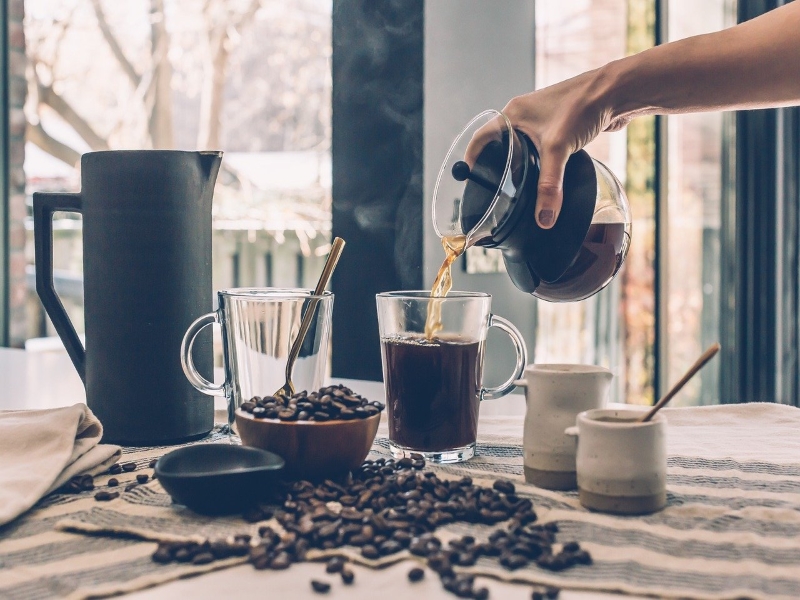
1. Brewed Coffee
A natural source of caffeine, coffee beans are used to make this brewed drink. Coffee is loved for its flavor and scent all over the world and is enjoyed for its stimulating properties, which improves mental task performance, mood, and energy levels. With 96 milligrams of caffeine on average in an 8-ounce cup, brewed coffee is a useful supplement for anyone leading a hectic lifestyle. Therefore, four cups of coffee per day will keep you within the 400 mg of acceptable coffee consumption for healthy adults at this rate.
The caffeinated beverage is made from roasted coffee beans, which are the seeds of berries from certain Coffea genus flowering plants. Unroasted green coffee is created by separating the coffee fruit’s seeds, which results in a stable, raw substance. After being roasted, the seeds are crushed into tiny particles and used to make roasted coffee, which is commonly soaked in hot water before being filtered out to create a cup of coffee.
Due mostly to the caffeine it contains, coffee is black in color, bitter, slightly acidic, and has a stimulating impact on people. One of the most commonly consumed beverages worldwide is it. There are several methods to prepare and offer it.
Even though chilled or iced coffee is widespread, it is often served hot. It’s common practice to add sugar, sugar substitutes, whole milk, or cream to mask or improve the bitterness of coffee. It might be paired with doughnuts or another sweet treat, such coffee cake.
The amounts of caffeine in various coffee products might vary widely. For instance, a 16-ounce (475 mL) Grande Vanilla Latte from Starbucks contains 170 mg of caffeine, whereas a Grande Blonde Roast of the same size contains 360 mg.
To be aware of the quantity, be sure to read the nutrition label.

2. Decaffeinated Coffee (Brewed Coffee And Instant Coffee)
Caffeine is still present in decaffeinated coffee. When compared to regular coffee, the amounts are lower though.
Depending on the brand and serving size, caffeine content 1–50 mg is present in one cup (240 mL) of decaf coffee. That is less than half of a typical cup’s caffeine content.
This version of coffee has many of the same advantages as its caffeinated counterpart, but none of the cardiovascular issues or adverse interactions. Based on the decaffeination technique, the flavor could not be similar to the regular coffee.
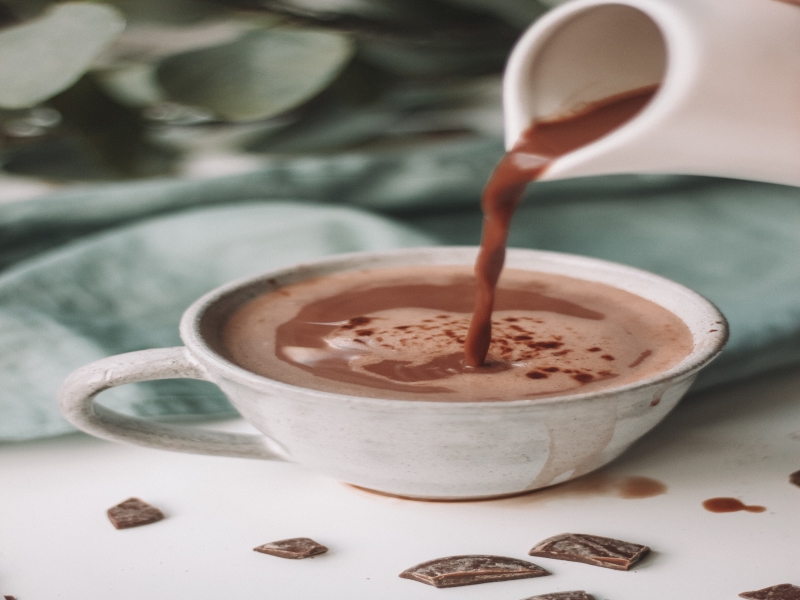
3. Drinks Made From Cocoa Beans And Chocolate
The dried and completely fermented seed of Theobroma cacao, often known as the cocoa bean, the cocoa seed, or simply cocoa , is where cocoa solids (a combination of nonfat components, the majority of cacao’s significant phytochemicals, including theobromine and caffeine, are found in this black, bitter mass.), and cocoa butter(the fat), are extracted. Chocolate is made from cocoa beans.
Naturally, cocoa beans also contain caffeine, just like coffee beans do.
Generally speaking, all chocolate and products flavored with chocolate include some caffeine, but how much depends on the product’s cocoa content.
Below is an idea of how much caffeine may be found in 3.5 ounces (100 grams) of various chocolates.
- Chocolate made entirely of cocoa ( pure cocoa chocolate) has 240 mg of caffeine, or 2.5 cups of ordinary coffee.
- 124 mg of caffeine is present in bittersweet chocolate. It has basically 55% cocoa.
- 45 milligrams or 33% cocoa of caffeine in milk chocolate, which is around a cup of black tea.
Moreover, cocoa includes components like flavonols and methylxanthines. Several research have looked at the possibility of cocoa as a functional food.
These substances, which include caffeine, have anti-inflammatory and antioxidant characteristics and can have health benefits. That’s excellent news if you enjoy drinking hot chocolate.
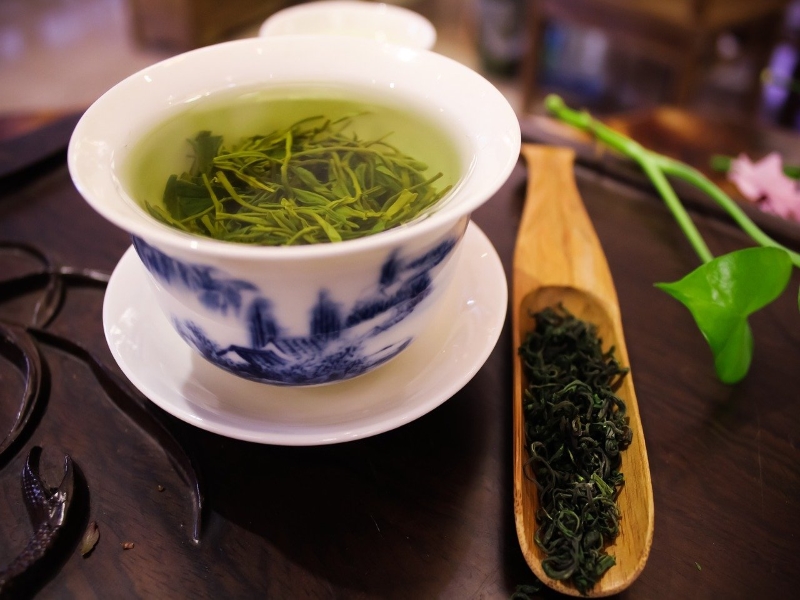
4. Brewed Green Tea
Green tea is another organic source of caffeine. It is particularly well-liked in Asian nations.
Studies have revealed that one of the amino acids, theanine, which is found in green tea, acts on the hippocampus in the brain and promotes relaxation, by lowering stress in both people and animals.
By dry weight, tea leaves have more caffeine than coffee beans. However, a normal serve comprises considerably less caffeine because less of the product is utilized in comparison to a cup of coffee. Growing circumstances, processing methods, and other factors can also affect the amount of caffeine. As a result, teas have varying amounts of caffeine. Basically, the age of the leaf affects the caffeine concentration in green tea. Caffeine content in older leaves is lower than in younger ones.
Green tea has more health advantages than black tea and doesn’t stimulate the nervous system as much, therefore many healthcare professionals advise their patients to consume it. However, there is only a 1 mg reduction in caffeine compared to a standard energy drink, and most brands differ in caffeine concentration.
The amount of caffeine in an 8-ounce (240 mL) intake of green tea is between 30 and 50 mg, or roughly half that of a cup of coffee.

5. Cola Soda/Soft Drinks
Another popular soft drink that contains caffeine is cola, which was originally made from kola nuts. Per 12 ounce serving, soft drinks generally range from 0 to 55 mg of caffeine.
The kola nut, a staple food that is indigenous to West Africa, is valued for its cultural significance as well as for its economic and health significance to all socioeconomic groups and religious groups. It used to be the primary flavoring component and caffeine source in commercial colas like Coca-Cola. The caffeine content of kola nut extract is large. Although, some well-known cola brands, no longer utilize it.
Even while cola sodas and bottled tea both contain equal amounts of caffeine, cola sodas are frequently sweetened, so you could feel a little more energized after drinking one than you would after drinking a bottled tea.
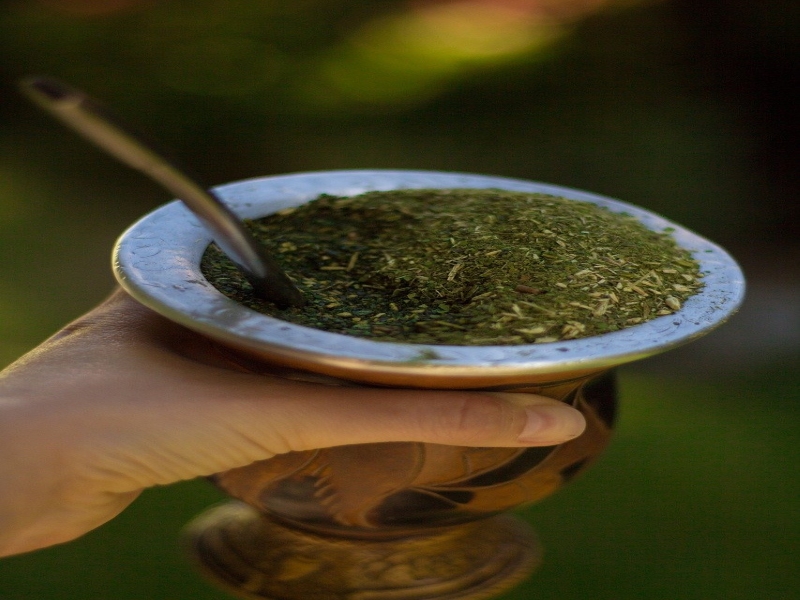
6. Yerba Mate Drink
A traditional beverage from South America with a lot of caffeine is called yerba mate. It is prepared by soaking dried yerba mate leaves (Ilex paraguariensis) in hot water. It is served with a metal straw in a cup that is normally formed from a calabash gourd (the mate proper), but can also occasionally be created from a cow horn (guampa).
It is sometimes called Paraguay tea, contains caffeine naturally. It has been commended by experts as a cardio-friendly beverage with a wide range of possible health benefits, including its antibacterial and antioxidant characteristics.
The plant chemicals known as polyphenols, which are beneficial to human health, are also abundant in yerba mate.
Yerba mate contains 20–180 mg of caffeine per 8 ounces (240 mL), but it depends on the brewing technique.
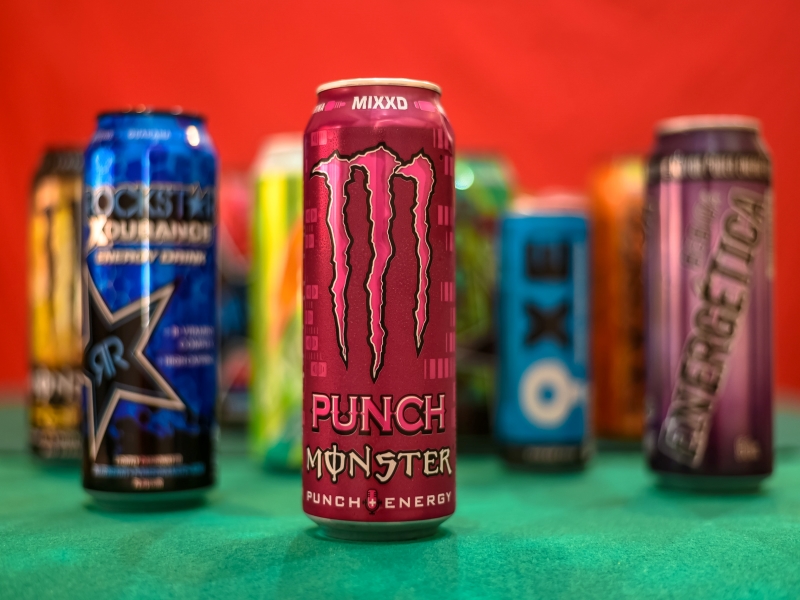
7. Energy Drinks
An energy drink is a kind of beverage that typically contains caffeine and is promoted as delivering both mental and physical stimulation. In addition to sugar, other sweeteners, herbal extracts, taurine, and amino acid are included. They may or may not be carbonated. They are different from sports beverages, which are promoted as enhancing athletic performance, and are a part of the wider category of energy goods, which also includes bars and gels. This drink category includes a wide range of brands and types.
Caffeine levels in energy drinks like Red Bull may start at 80 mg per serving. These beverages include caffeine, either naturally occurring in the components or as an addition made from decaffeinated coffee or chemical synthesis.
Energy drinks are marketed as food supplements, not subject to FDA supervision, and not subject to extensive evaluation.
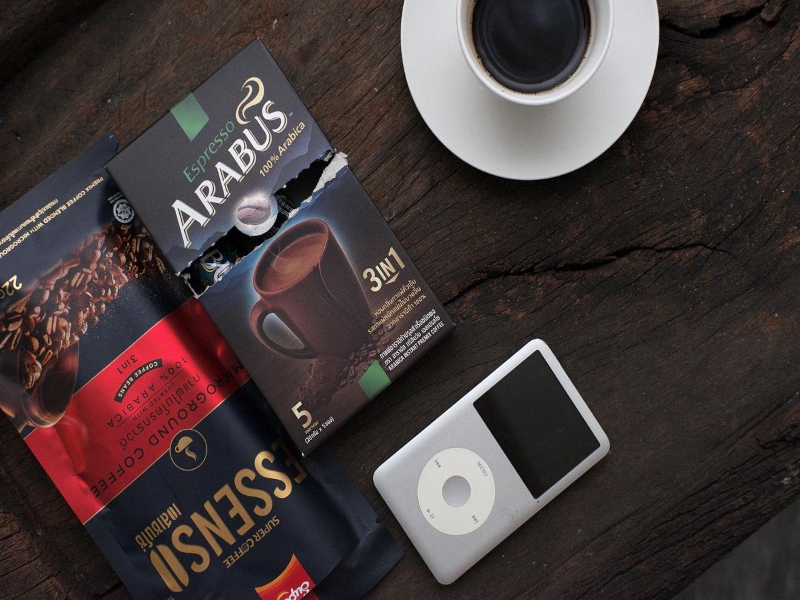
8. Instant Coffee
For the convenience of customers who don’t want to make their own coffee or who don’t have access to coffeemaker, a variety of goods are sold. Instant coffee is freeze-dried into granules or dried into a soluble powder that dissolves fast in hot water.
There are 62 mg of caffeine in every 8 oz (237 ml) typical serving of a beverage.
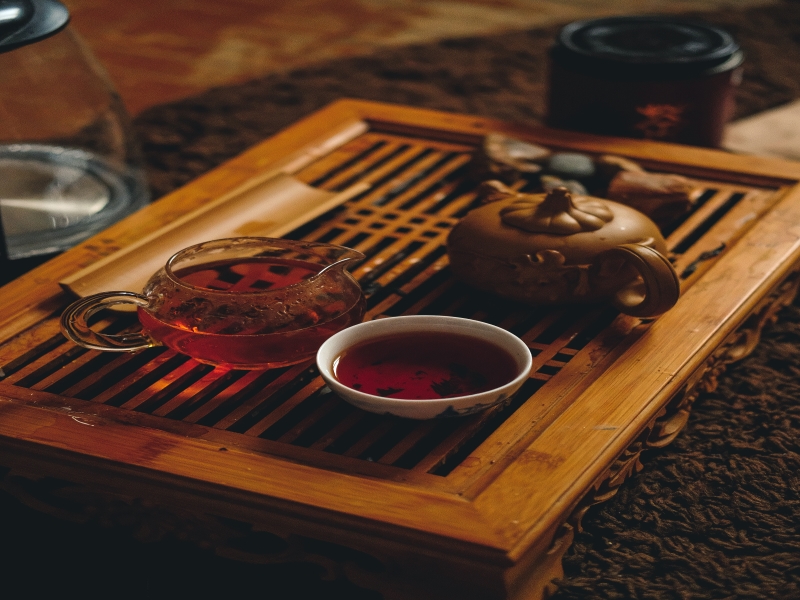
9. Brewed Black Tea
In comparison to other teas, black tea often has a stronger flavor.
While plain black tea offers nothing in the way of calories or minerals, it does include caffeine. Black teas from the Camellia sinensis plant include polyphenols, such as flavonoids, whose early effects on blood pressure and blood lipids as risk factors for cardiovascular disease are being examined, though the results of this research are still preliminary.
Black tea use over an extended period of time reduced systolic and diastolic blood pressure just marginally, by around 1-2 mmHg. It is believed that drinking black tea may be link with a reduced risk of stroke.
An 8 ounce or 240 ml serving of a beverage has 47 mg of caffeine.

10. Ready-To-Drink (Bottled Tea/ Iced tea)
Packaged drinks that are marketed prepared and ready to drink are referred to as RTDs or Ready-to-drink. Iced tea (made with fruit juice and tea leaves) and alcopops (made by combining alcoholic beverages with fruit juices or soft drinks) are a few of examples.
Bottled tea is much less stimulating than tea prepared at home only based on caffeine content. However, if you’re on the run and want something more energizing than water, this is a fantastic option. To get the most health benefits, pick a non-sweetened type. A sweetener is the primary component in bottled iced tea.
Frequently Asked Questions
Sports drinks may have sugars, but they don’t offer much in the way of nourishment. They increase calorie intake. Sports drinks may thus cause weight gain if you don’t exercise for a long time or vigorously. Additionally, the sugar in these beverages may cause tooth issues. Sports drinks sometimes include sugary carbohydrates in addition to electrolytes, minerals, and occasionally protein, vitamins, or caffeine. They are available in many flavors.
It’s advised to minimize caffeine intake during pregnancy because excessive caffeine consumption might raise the chance of miscarriage or low birthweight.
A lot of Boba tea contains caffeine since it is brewed with teas like black or green tea, which also contain caffeine.

